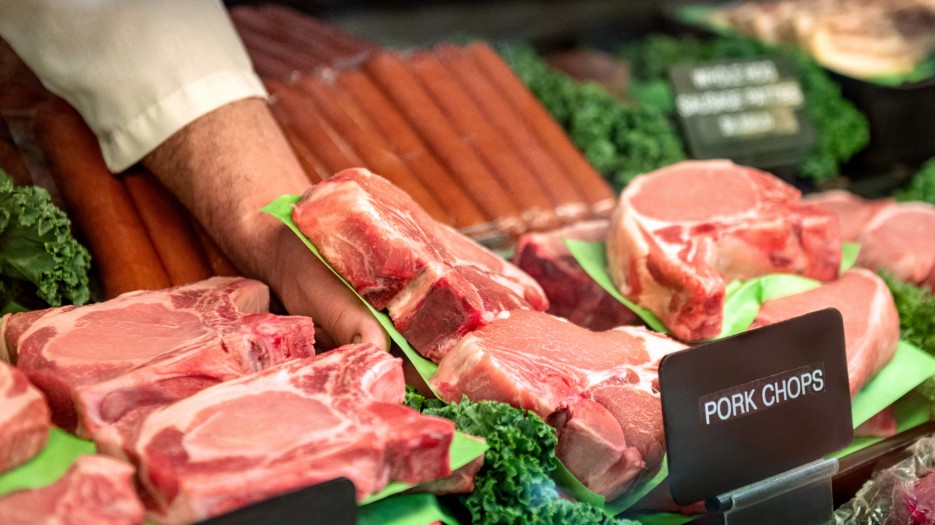This is a story that makes one continue to believe in humanity. If it were not for the kindness of...
Move Over Bacon, the Pork Chop is Back

Bacon has gained in popularity, leaving pork chops in the dust. By teaching consumers new and innovative ways to prepare a pork chop, the National Pork Board (NPB) is hoping to add value to this middle meat.
Living high on the hog. Maybe the saying does not mean what it used to. Pork loins, the typically high-value primal cut, have been replaced by the belly. A shift in consumer diets may be to blame.
With every generation, there are different diets. The Generation Z folks just are not the meat-and-potatoes generation, but they love bacon. Still, the shift in pork products may reflect the net affordability to the average consumer.
“Wages for the typical U.S. resident aren’t keeping up with the cost of living,” says Glynn Tonsor, a professor in the Department of Ag Economics at Kansas State University. “So, their buying power has eroded over the last 18 months.”
However, it could be that consumers simply don’t like the taste or texture of pork. Or perhaps the quality is just not there in the retail case.
With the changing pork landscape, quality and consistency are becoming a priority. The NPB is conducting consumer research to combat these tough days for the pork chop.
Quality is key
As the industry shifts from promoting “the other white meat” to conveying a higher-quality picture of pork to consumers, there is an opportunity to grow the market.
The 2023 World Pork Expo in Des Moines, Iowa, hosted a panel discussion around its consumer benchmarking study. This comprehensive study is conducted every three years in 16 market areas, across 27 retailers.
“Quality means a lot of different things. To international consumers, that often means fresh and food safe,” says David Newman, newly elected Senior Vice President for Market Growth at NPB. “What matters to us when selecting pork is the palatability of the meat. Things associated with juiciness, tenderness and flavor.”
According to the NPB Pork Checkoff benchmark study, 96% of fresh pork at the retail case is not enhanced, which is when non-meat ingredients are added to fresh pork. But NPB and pork producers do not want to add anything to their product. They want juiciness, tenderness and flavor to come from the meat itself.
When assessing how much of the pork selection is pre-cut and packaged or case-ready, it is at 40%. That is a 7% increase from 2018. But NPB wants that number to go higher and enhanced pork products to move lower. By 2025, it expects the case-ready numbers to grow by 15%.
Creating a pork following
Looking at other proteins, it is easy to see marketing and branded programs that tell consumers their protein is a versatile product. For instance, branded programs such as Certified Angus Beef in the beef industry give the consumer an idea on what to expect with that product.
However, the same cannot be said about fresh pork.
The pork industry might be stamping those branded programs on labels soon. With different programs like Duroc, premium, grass-fed and others, it will give the consumer a better idea of what they are purchasing.
“There are a lot of times that we only use price and trade to get people to purchase pork,” says Kiersten Hafer, Vice President of Strategy and Insights at NPB. “So, we must move beyond the price and promotion to doing other things that keep it front and center of consumer’s minds.”
To that end, NPB provides new recipes that teach consumers how to prepare a pork dish. This could include the utilization of new kitchen gadgets such as the air fryer or even a simple marinade recipe for pork chops.
Change needed throughout food chain
These drivers for change all start at the ground with on-farm innovation and investments from pork producers.
When making selections in a breeding program, producers focus on quality metrics that generate genetic improvements. These quality metrics include color, tenderness and marbling. Management strategies for quality can also improve end-product quality through feeding and handling improvements.
Once the live hog reaches market weight, the next step that will influence pork quality is at the processor. The packing industry is making strides to improve pork quality with increasing the resting time before processing and utilizing CO2 stunning. These practices have shown to improve the water-holding capacity, creating a juicier product.
Investments from production to processing improve tenderness, foster a darker pork color and create a consistent marbling percentage. Gone is the need to enhance U.S. pork products. The result is a higher-quality product in the retail case for consumers.
It is going to take the entire industry from the breeder to the retail stores to promote the sale of pork loins. But with the help of NPB, work is being done to add more value to the center-cut loin.
EDITOR’S TAKE:
The pork industry is undertaking a pretty monumental effort to improve quality and consumer acceptance. Starting with the pork producer and the genetics, the feed and general conditions in which the pig is raised all the way through the distribution chain, is a pretty tall order. It can be done, we have seen similar undertakings in beef, dairy, soybean and corn sectors. When successful, it will boost demand and help raise the bar for future generations of pork producers and the consumers they serve. Once again, we see farmers investing in their future through their commodity checkoff program – NPB. We applaud this effort and wish them well. Be sure to visit with pork producers in your area about this new program. And while you’re at it, make sure you tell them about all the exciting things CAD has to offer. Help them sign up for the Michelin and AgTruckTrader.com “Get-A-Grip” Summer Sweepstakes giveaway!








